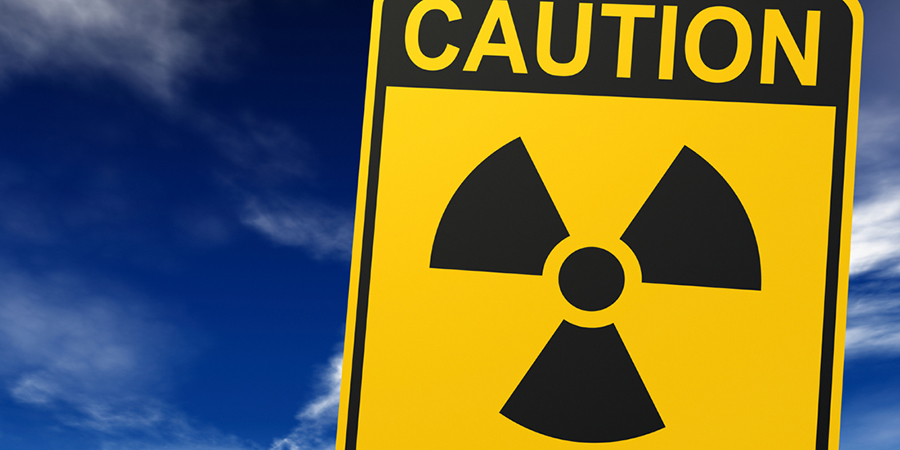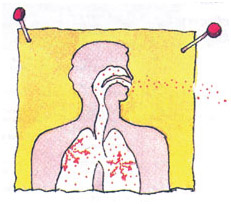Radon Risks

Today many homes are built to prevent radon from coming in. Your state or local area may require these radon-resistant construction features. If you are buying or renting a new home, ask the owner or builder if it has radon-resistant features. The EPA recommends building new homes with radon-resistant features in high radon potential (Zone 1) areas. Even if built radon-resistant, every new home should be tested for radon after occupancy. If you have a test result of 4 pCi/L or more, you can have New England Radon add a vent fan to an existing passive system to further reduce the radon level in your home.

The average indoor radon level is estimated to be about 1.3 pCi/L, and about 0.4 pCi/L of radon is normally found in the outside air. The U.S. Congress has set a long-term goal that indoor radon levels be no more than outdoor levels. While this goal is not yet technologically achievable in all cases, most homes today can be reduced below 4 pCi/L.
The EPA believes that any radon exposure carries some risk – no level of radon is safe. Even radon levels below 4 pCi/L pose some risk, and you can reduce your risk of lung cancer by lowering your radon level.
Test your home now and save your results. If you find high radon levels, fix your home.
Even if your test result is below 4 pCi/L, you may want to test again sometime in the future.
The Risk of Living With Radon

Radon gas decays into radioactive particles that can get trapped in your lungs when you breathe. As they break down further, these particles release small bursts of energy. This can damage lung tissue and lead to lung cancer over the course of your lifetime. Not everyone exposed to elevated levels of radon will develop lung cancer. And the amount of time between exposure and the onset of the disease may be many years.
Like other environmental pollutants, there is some uncertainty about the magnitude of radon health risks. However, we know more about radon risks than risks from most other cancer-causing substances. This is because estimates of radon risks are based on studies of cancer in humans (underground miners).
Smoking combined with radon is an especially serious health risk. Stop smoking and lower your radon level to reduce your lung cancer risk.
Scientists are more certain about radon risks than from most other cancer-causing substances.
Children and the elderly have been reported to have greater risk than adults of certain types of cancer from radiation.
Your chances of getting lung cancer from radon depend mostly on:
- How much radon is in your home
- The amount of time you spend in your home
- Whether you are a smoker or have ever smoked
Radon Risk If You Smoke:
| Radon Level | If 1,000 people who smoked were exposed to this level over a lifetime*… | The risk of cancer from radon exposure compares to**… | WHAT TO DO: Stop smoking and… |
| 20 pCi/L | About 260 people could get lung cancer | 250 times the risk of drowning | Fix your home |
|---|---|---|---|
| 10 pCi/L | About 150 people could get lung cancer | 200 times the risk of dying in a home fire | Fix your home |
| 8 pCi/L | About 120 people could get lung cancer | 30 times the risk of dying in a fall | Fix your home |
| 4 pCi/L | About 62 people could get lung cancer | 5 times the risk of dying in a car crash | Fix your home |
| 2 pCi/L | About 32 people could get lung cancer | 6 times the risk of dying from poison | Consider fixing between 2 and 4 pCi/L |
| 1.3 pCi/L | About 20 people could get lung cancer | (Average indoor radon level) | (Reducing radon levels below 2 pCi/L is difficult.) |
| 0.4 pCi/L | About 3 people could get lung cancer | (Average outdoor radon level) |
Note: If you are a former smoker, your risk may be lower.
* Lifetime risk of lung cancer deaths from EPA Assessment of Risks from Radon in Homes (EPA 402-R-03-003).
** Comparison data calculated using the Centers for Disease Control and Prevention’s 1999-2001 National Center for Injury Prevention and Control Reports.
Radon Risk If You’ve Neved Smoked:
| Radon Level | If 1,000 people who smoked were exposed to this level over a lifetime*… | The risk of cancer from radon exposure compares to**… | WHAT TO DO: |
| 20 pCi/L | About 36 people could get lung cancer | 35 times the risk of drowning | Fix your home |
|---|---|---|---|
| 10 pCi/L | About 18 people could get lung cancer | 20 times the risk of dying in a home fire | Fix your home |
| 8 pCi/L | About 15 people could get lung cancer | 4 times the risk of dying in a fall | Fix your home |
| 4 pCi/L | About 7 people could get lung cancer | The risk of dying in a car crash | Fix your home |
| 2 pCi/L | About 4 people could get lung cancer | The risk of dying from poison | Consider fixing between 2 and 4 pCi/L |
| 1.3 pCi/L | About 2 people could get lung cancer | (Average indoor radon level) | (Reducing radon levels below 2 pCi/L is difficult.) |
| 0.4 pCi/L | (Average outdoor radon level) |
Note: If you are a former smoker, your risk may be lower.
* Lifetime risk of lung cancer deaths from EPA Assessment of Risks from Radon in Homes (EPA 402-R-03-003).
** Comparison data calculated using the Centers for Disease Control and Prevention’s 1999-2001 National Center for Injury Prevention and Control Reports.
It’s never too late to reduce your risk of lung cancer. Don’t wait to test and fix a radon problem.





